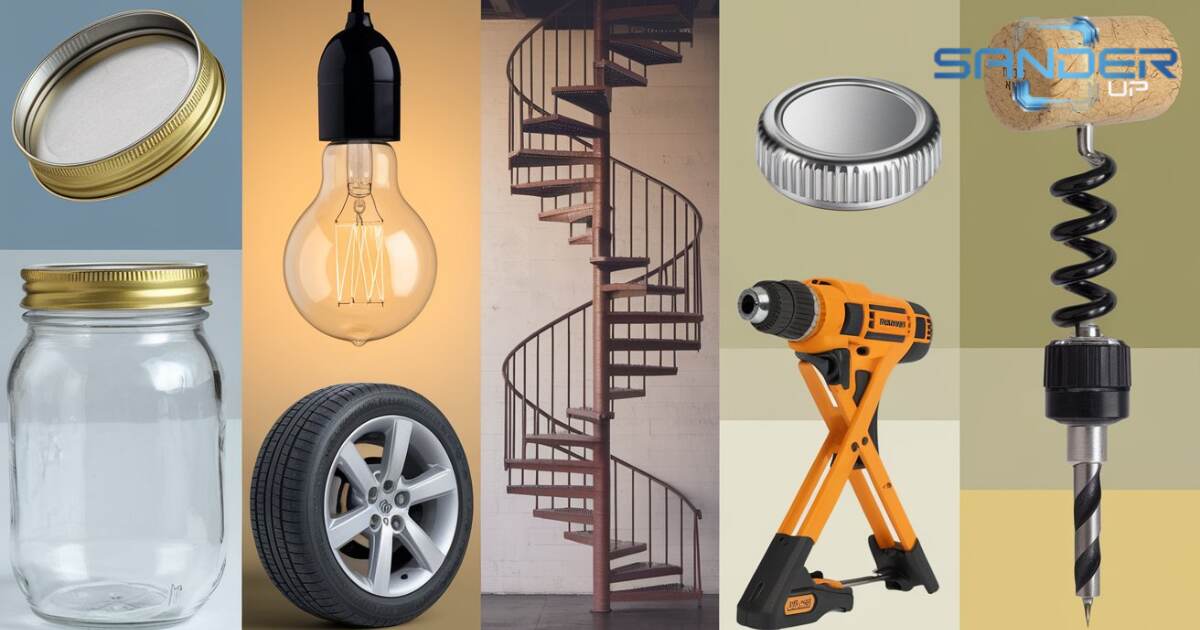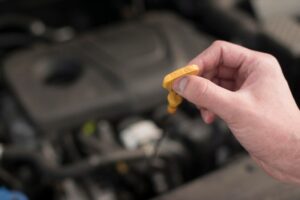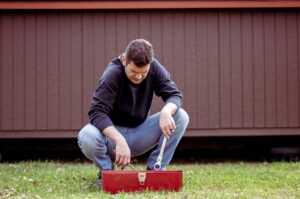Screws are everywhere in our daily lives, though we may not always notice them. From holding furniture together to making gadgets work, these simple machines are essential.
They transform rotational force into linear movement, making tasks easier. In this article, we’ll explore 15 screw examples that you encounter in everyday life. You’ll be surprised by how often these handy tools make things around us function smoothly.
What is a Screw?
A screw is a simple mechanical device. It is designed with a helical ridge, known as the thread. Screws are commonly used to fasten objects together. They are twisted into a material, holding items securely by creating friction or tension.
Screws come in many shapes and sizes, depending on their use. They can be flat, round, or oval-headed. Some have sharp points for easy insertion, while others are blunt. This variety makes them suitable for different tasks.
Screws are made from various materials, including steel, brass, and plastic. Steel screws are strong and durable. Brass screws resist corrosion and are often used in electronics. Plastic screws are lightweight and ideal for indoor applications.
Whether in construction or home repairs, screws are essential for joining materials tightly. They provide stability and support to structures. With the right screw, you can ensure that items stay firmly in place.
Nail and Screw
Nails and screws are both essential fasteners used in construction and repairs. Nails are smooth metal rods with flat heads, driven into materials using a hammer. They hold materials together by friction and the force of the hammer. Nails are ideal for quick, temporary, or lightweight projects.
Screws, on the other hand, have threads that twist into the material, creating a more secure bond. They are tightened using a screwdriver. Screws provide better grip and strength compared to nails, especially for heavy or long-lasting projects. Choosing between them depends on the durability and type of project.
Screw Simple Machine Examples
Here are examples of screw simple machines:
- Jar Lid
- Light Bulb
- Bottle Cap
- Spiral Staircase
- Corkscrew
- Car Jack
- Drill Bit
- Vice Clamp
- Meat Grinder
- Water Bottle Tops
- Screwdriver
- Wood Screw
- Anchor Screw
- Elevator
- Screw Pump
- Bolt
- Faucets
- Gas Tank Cap
- Guitar Tuners
- Ballpoint Pens
- Circular Stairways
1. Jar Lid
The threads on the neck of the jar align perfectly with the threads on the jar lid. To close the jar, you match the lid’s threads with the jar and apply a twisting force. This torsion force helps to secure the lid tightly onto the jar.
When you twist the lid in the opposite direction, it loosens and opens. The entire mechanism resembles the working of a simple screw machine, making a jar lid an everyday example of this concept.
2. Light Bulb
When you fix a light bulb into its holder, you apply a twisting force to rotate the bulb. The threads on the base of the bulb match the threads inside the holder, allowing the bulb to fit securely.
This rotation process ensures that the bulb is properly connected for electrical contact. The interaction between the bulb’s base and the holder operates just like a simple screw machine, making it a common example of how screws work in daily life.
3. Bottle Cap
Fastening and unfastening a bottle cap is another example of a simple screw mechanism. The threads inside the cap match the threads on the neck of the bottle. When you apply a twisting force, the cap screws onto the bottle, securing it tightly.
By twisting in the opposite direction, you unscrew the cap, opening the bottle. This process relies on the same principles as a screw machine, making the bottle cap a clear example of everyday screw usage.
4. Spiral Staircase
A spiral staircase functions as a large-scale example of a screw. The stairs twist around a central pole, mimicking the helical shape of a screw thread. Each step rises gradually as the staircase spirals upward, much like the way a screw ascends as it rotates.
This design allows for space-saving vertical movement in tight areas. The spiral motion is similar to the rotational movement of a screw, making a spiral staircase an effective architectural example of the screw mechanism.
5. Corkscrew
A corkscrew is a simple metallic screw attached to a handle. To open a wine bottle, you insert the corkscrew into the cork and apply a twisting force. The spiral design of the corkscrew allows it to grip the cork as it rotates deeper into it.
Once the corkscrew is fully embedded, a vertical pull easily extracts the cork from the bottle. This process perfectly demonstrates the operation of a screw, making the corkscrew a classic example of a simple screw machine.
6. Car Jack
A car jack uses a screw mechanism to lift a car. The threaded screw converts rotational motion into linear motion, allowing the jack to raise or lower the car. By turning the screw, you can easily lift the car for maintenance. This mechanism is similar to the way a screw moves objects, making the car jack a practical example of a screw machine.
7. Drill Bit
A drill bit is a tool with spiral threads, designed to make holes in various materials. When the drill rotates, the threaded bit cuts into the surface, creating a hole with precision. The spiral threads help to move debris out of the hole, much like how a screw pulls material along its length as it turns.
8. Vice Clamp
A vice clamp uses a threaded screw to tighten or loosen its grip on objects. By turning the screw, the jaws of the vice move closer together or further apart. This process demonstrates the screw’s ability to generate pressure and hold objects securely, making it a useful example of a screw machine in action.
9. Meat Grinder
In a meat grinder, a large screw, called an auger, pushes meat through the grinder’s blades. As the screw rotates, it forces the meat forward, cutting and grinding it into smaller pieces. This continuous movement shows how a screw can efficiently transport and process materials.
10. Water Bottle Tops
Water bottle tops use threads on both the cap and the neck of the bottle. Twisting the cap onto the bottle creates a tight seal, securing the contents inside. When unscrewing the top, the cap moves upward along the threads, opening the bottle. This simple twisting motion mirrors the basic function of a screw.
11. Screwdriver
A screwdriver is used to drive screws into materials. The tip of the screwdriver fits into the head of the screw, and by twisting the handle, the screw rotates into place. This tool directly demonstrates how screws work, as it is used to insert and remove screws in various tasks.
12. Wood Screw
A wood screw is designed specifically for fastening wood. It has a sharp, pointed tip and coarse threads that easily grip into wood surfaces. When driven into the wood, the spiral threads create a strong hold by cutting into the material, ensuring a tight and secure connection.
The wood screw’s design allows it to join two pieces of wood together efficiently, with the wide threads providing excellent grip and minimizing the risk of splitting the wood. It’s a perfect example of how a screw can be used in construction and carpentry tasks.
13. Anchor Screw
An anchor screw is used to secure objects to walls or ceilings, especially in masonry or drywall. It consists of a screw with a hollow sleeve or a threaded body that expands as the screw is tightened. When you drive the anchor screw into a pre-drilled hole, the sleeve expands against the surrounding material, creating a strong hold.
This mechanism allows for a secure fastening point for shelves, brackets, or heavy objects. The anchor screw effectively demonstrates how screws can provide stability and support in construction and home improvement projects.
14. Elevator
An elevator operates on the principle of a screw mechanism, particularly in screw-driven elevators. In this system, a large screw, often called a screw jack, converts rotational motion into vertical movement. As the screw rotates, it lifts the elevator car smoothly up or down.
The elevator’s design allows it to carry passengers or goods between floors safely. The screw mechanism ensures stability and control during movement, making the elevator a practical application of screw technology in everyday life.
15. Screw Pump
A screw pump is a type of positive displacement pump. It uses one or more screws to move fluids. The design allows for smooth and continuous flow, making it efficient for various applications.
Screw pumps are often used in industries such as oil and gas, food processing, and wastewater management. They can handle viscous fluids, slurries, and even solids without damaging them. Their ability to maintain a consistent flow rate makes them ideal for precise dosing and transfer of materials.
These pumps are known for their durability and low maintenance needs. They operate quietly and can work at different speeds, depending on the application. Overall, screw pumps are reliable tools in fluid management systems.
16. Bolt
A bolt is a type of fastener used to hold two or more objects together. It features a cylindrical shaft with helical threads that run along its length. To secure objects, you insert the bolt through aligned holes and use a nut on the opposite end. As you tighten the nut, it threads onto the bolt, creating a strong clamping force.
Bolts come in various sizes and materials, making them versatile for many applications, from machinery to construction. This straightforward mechanism illustrates the effectiveness of screws in providing strong, reliable connections in countless everyday situations.
17. Faucets
A faucet uses a screw mechanism to control the flow of water. When you twist the handle, it rotates a screw inside, which opens or closes the valve. This action adjusts the flow of water, allowing you to turn it on or off easily. The design showcases how screws can regulate fluid movement, making faucets an essential example of screw technology in daily use.
18. Gas Tank Cap
A gas tank cap utilizes a threaded design to secure the cap onto the fuel tank. When you twist the cap, the threads engage with the tank’s neck, creating an airtight seal. This prevents fuel leakage and contamination. Unscrewing the cap releases the seal, allowing access to the tank. The twisting motion demonstrates the basic principle of a screw, highlighting its importance in automotive applications.
19. Guitar Tuners
Guitar tuners are essential components used to adjust the pitch of guitar strings. Each tuner consists of a knob with a spiral thread that allows for tightening or loosening the string. When you turn the knob, it rotates the internal peg, which either increases or decreases the tension on the string.
This mechanism allows musicians to achieve the desired tuning for their instruments easily. The spiral threads in the tuners demonstrate the fundamental operation of a screw, making guitar tuners a perfect example of this simple yet effective machine in the world of music.
20. Ballpoint Pens
Ballpoint pens use a screw mechanism to control the movement of the pen’s ink cartridge. When you click or twist the pen, it activates a small internal screw that either retracts or extends the ballpoint tip. This action allows the ink to flow onto the paper while keeping the tip protected when not in use.
The ballpoint itself is a small metal sphere that rotates as you write, dispensing ink smoothly. This design effectively combines the principles of a screw with a writing instrument, showcasing how screws can enhance functionality in everyday objects like pens.
21. Circular Stairways
Circular stairways, similar to spiral staircases, utilize a screw-like design for vertical movement. The steps are arranged in a circular pattern around a central support column. As you ascend or descend, you move in a circular motion, much like how a screw spirals upwards.
This design allows for efficient use of space while providing a smooth transition between levels. The circular movement mimics the action of a screw, demonstrating how screw mechanics can be applied in architecture to create functional and aesthetic structures.











